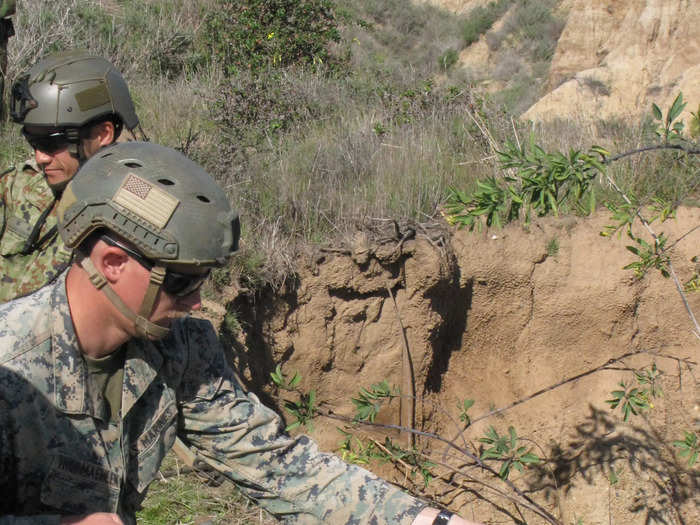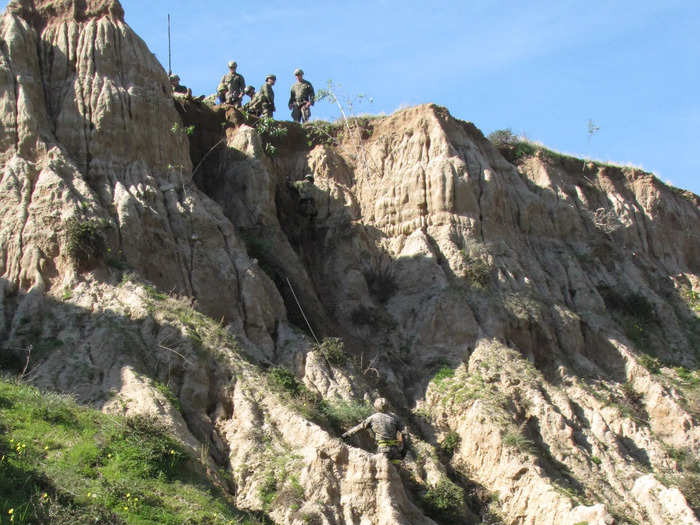Marine reconnaissance teams operate in small six-man teams that can easily get in and out of places, but climbing is not a very fast process.
There are a number of different reasons Marines may be required to climb. For example, they may be asked to pull mortars and machine guns up to set up support-by-fire positions for maneuvering elements below.
Or, as the recon teams do, they may be scouting out the enemy's strength and positions.
The important things, Bruegman said, for Marines to remember when climbing is proper rigging, that the locking carabiner is locked down, and constant communication between the person on the rope and the belay man.
During the climbing training at Camp Pendleton, troops shouted back and forth, but in combat, they have to be more inconspicuous. In addition to radio communication, the Marines may also use hand signals. And, at night, they may use red and green chemlights.
Marine reconnaissance teams, which can play a critical role in route selection for troops that follow, are among the forces that want their activities going unnoticed.
Larger forces can be significantly more complicated.
"I look for the easiest spot to get up," Bruegman said. "And, I set up a lane there to assist the large masses that'll go up."
But there are challenges. "If you're talking about a hundred guys, they're going to start eroding all the vegetation, and it gets a lot slipperier," Bruegman said.
On a slope, the Marines might put anchor points at the top and run a rope with handholds down for troops to pull themselves up. "That way they don't end up tumbling down the hill," he explained, adding that multiple lanes would be set up for expediency.
For the really steep cliffs, which are best to bypass if at all possible, the Marines would create some sort of ladder system to better support the movement of a lot of troops up top.
And there is always the risk of coming under enemy fire.
"You're not going to be fighting on a climb. You're not fighting from the rope," Bruegman told Insider, explaining that the aim is not to have troops climbing under fire. "You would want to definitely gain fire superiority and take care of that enemy threat before you start putting guys up on the rope."
But, in combat, things do not always go according to plan.
In the event that the Marines started taking fire mid-climb, there are emergency action drills. "If you have guys close to the top, you hurry them up and have them begin returning fire," Bruegman said.
In that situation, the troops at the bottom move to cover rather than continue with the climb.



